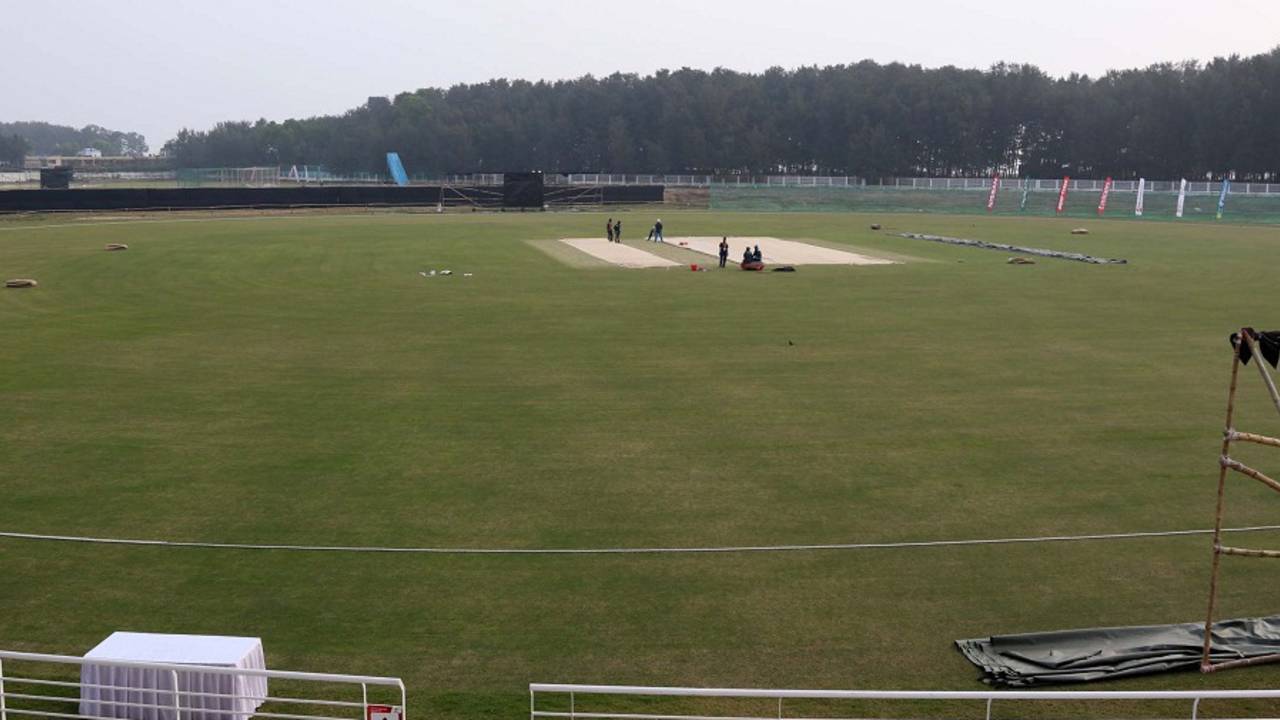A walk around the 55-acre Sheikh Kamal International Cricket Complex tells you that, in the years to come, Cox's Bazar should become a major hub for Bangladesh cricket. After the country's Prime Minister Sheikh Hasina gifted this land to the BCB in 2013, it has hosted domestic matches, the Women's World Cup, and is now being used in the Under-19 World Cup.
The potential lies in the location of the complex. Cox's Bazar is Bangladesh's most popular tourist destination thanks to its uninterrupted, 125km sandy beach. The stadium complex's location is such that the Laboni beach point lies at its west. You can hear the waves crashing on the shore but the beach is not fully visible due to a tree-line that stretches from the southwest to the northwest part of the complex.
The allure of watching cricket by the beach is a big draw and while stands are yet to be built completely, it is a part of the BCB's master plan. Presently there is one structure that houses the pavilions, some gallery seating and the media facilities. What it mainly offers, though, is training and playing facilities to a number of teams at the same time.
Cox's Bazar can solve the overall problem of lack of grounds in Bangladesh. While the men's, women's and Under-19 teams are given full facilities at the Shere Bangla National Stadium in Dhaka, it is not as easy for other cricketers or teams. Many of the Dhaka Premier League clubs no longer have their own training grounds in the city, so there are times during the cricket season when up to seven teams are practising at once at the National Cricket Academy ground in Mirpur. There aren't too many cricket facilities in Chitttagong either.
The main features of the Cox's Bazar complex are a stadium, another full-sized ground called the academy field, and a separate training facility. There are 36 pitches in total at the three venues, the most at any cricket facility in Bangladesh. The training ground has 12 pitches while the academy ground has five centre pitches. The main stadium has seven centre pitches that have come across as typically slow Bangladesh wickets. But that's not the focus at this stage.
Hanif Bhuiyan, the BCB's grounds committee chairman, says that the grounds often get submerged during the monsoons. The immediate work after the Under-19 World Cup is to install proper drainage in the three grounds, after which there are some beautification plans to put in place as well. "We have already planted 400 coconut trees, which in about two years will make the entire complex look better" he says. "We also plan to make proper walkways to the three grounds. There is much potential here to make it into a major cricket facility."
The size of the plot also means the BCB has options for commercial use. While there are plans to use the small lake for boating, there is even talk of building a hotel. The initial plan, though, is to build dormitories for players and staff. Once this is done, the overall dearth of venues for major teams in Bangladesh won't be felt as much.
In 1996, the then BCB president Saber Hossain Chowdhury first spoke of making use of Cox's Bazar in-built popularity for Bangladesh cricket's growth, by tagging it with tourism. Four years later he held the BCB's AGM in Cox's Bazar, and plans were put in place to find land. The BCB waited a long time to get a piece of land next to the beach, and their dream was realised 13 years later.
With the intervention of the prime minister, this is the only facility in Bangladesh directly owned by a sporting federation. All other grounds in Bangladesh are leased to federations such as the BCB by the National Sports Council. While the law of the land says much of the approval comes from the NSC, the backing from the highest level gives BCB ownership of the complex.
The major hindrance to the overall development in the Cox's Bazar facility is inflexibility within the BCB. Often the thinking is short-term, which is four years of the elected time as officials and directors. Making the complex worthwhile or commercially viable could take more than four years so the current set-up under Nazmul Hasan must take a long-term call. If they can take the leap in Cox's Bazar, Bangladesh cricket will be stronger.
Mohammad Isam is ESPNcricinfo's Bangladesh correspondent. @isam84
